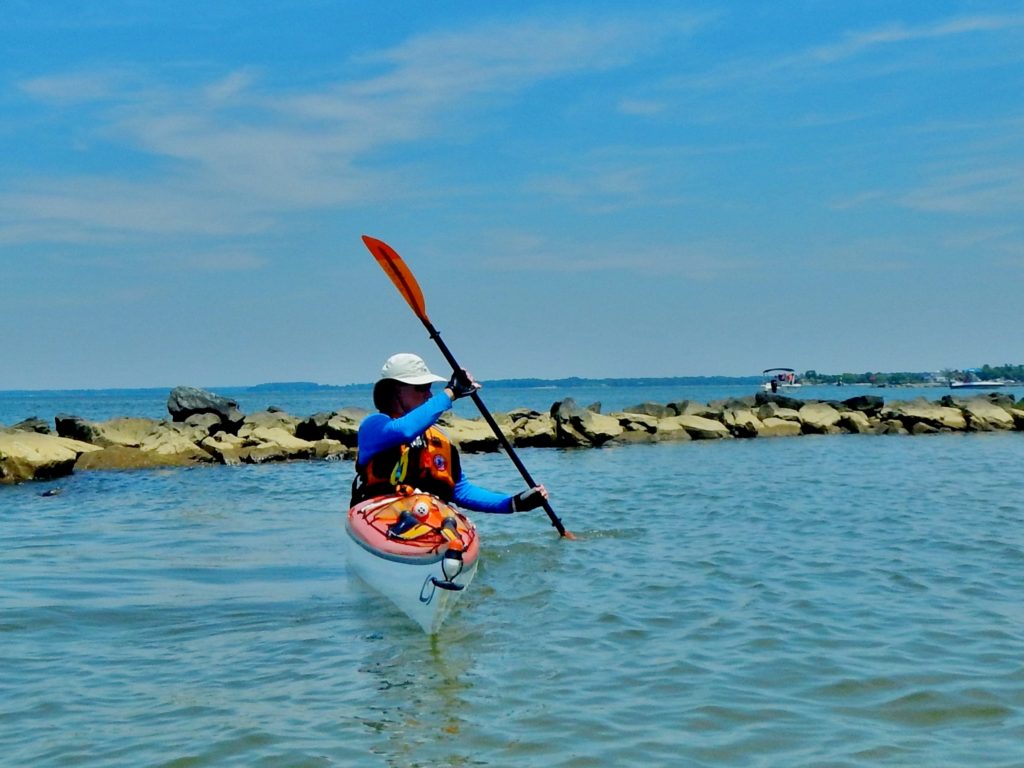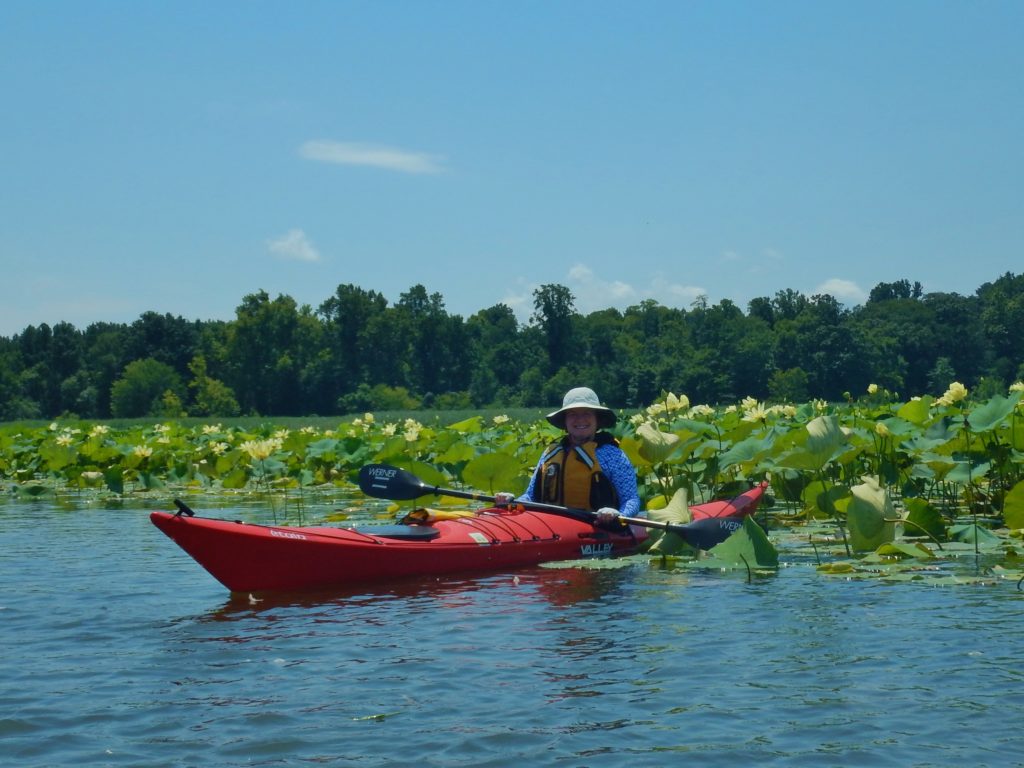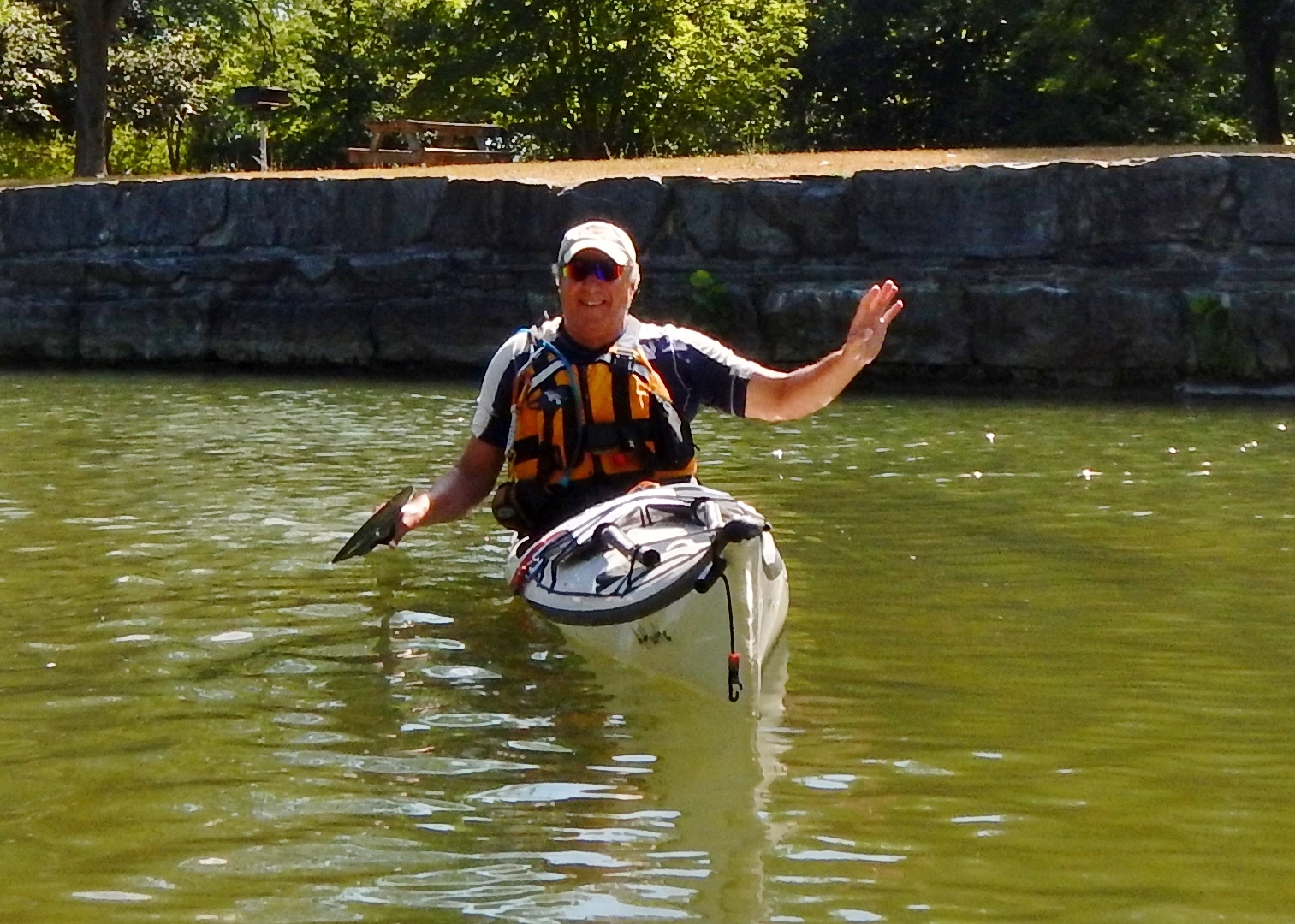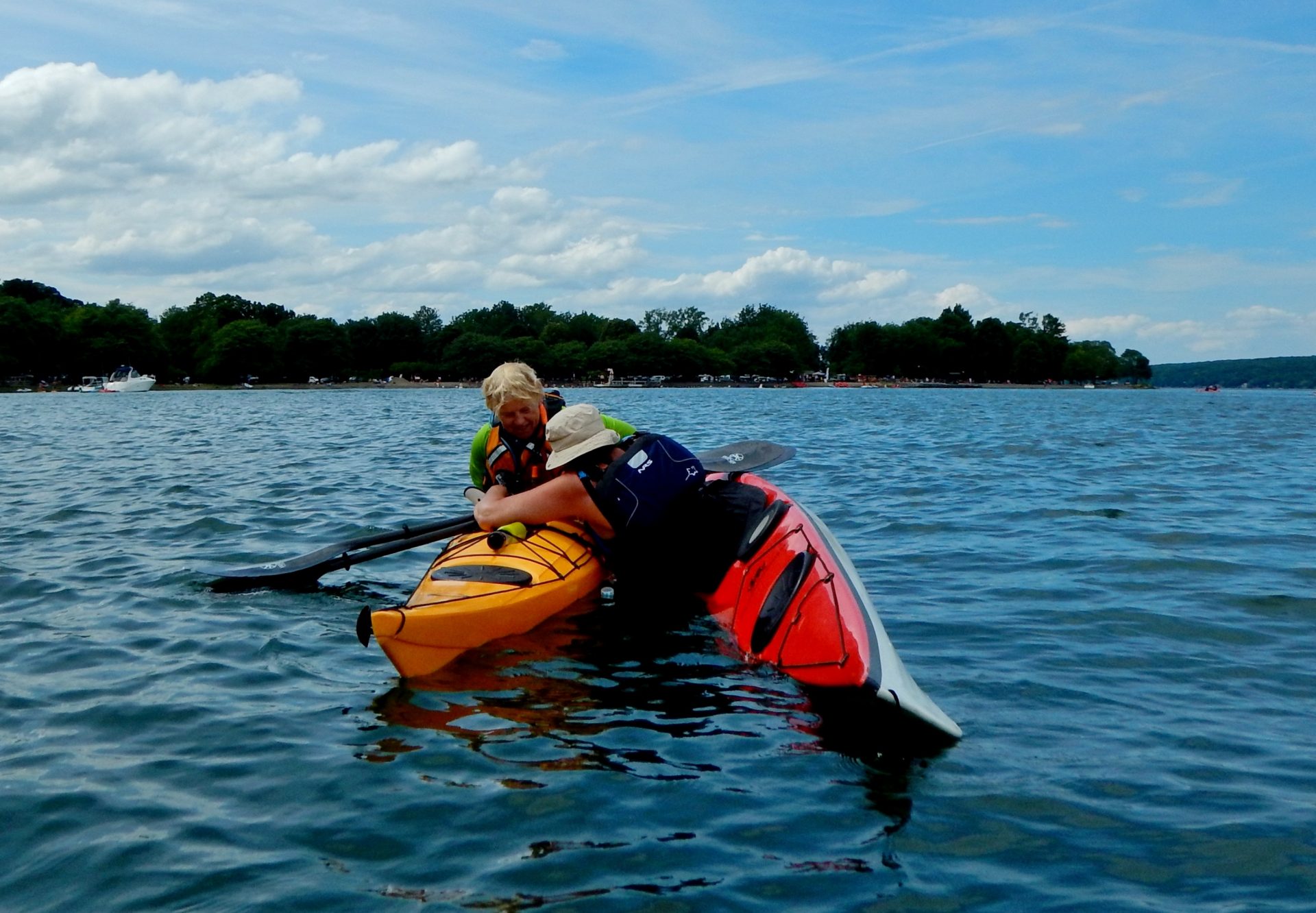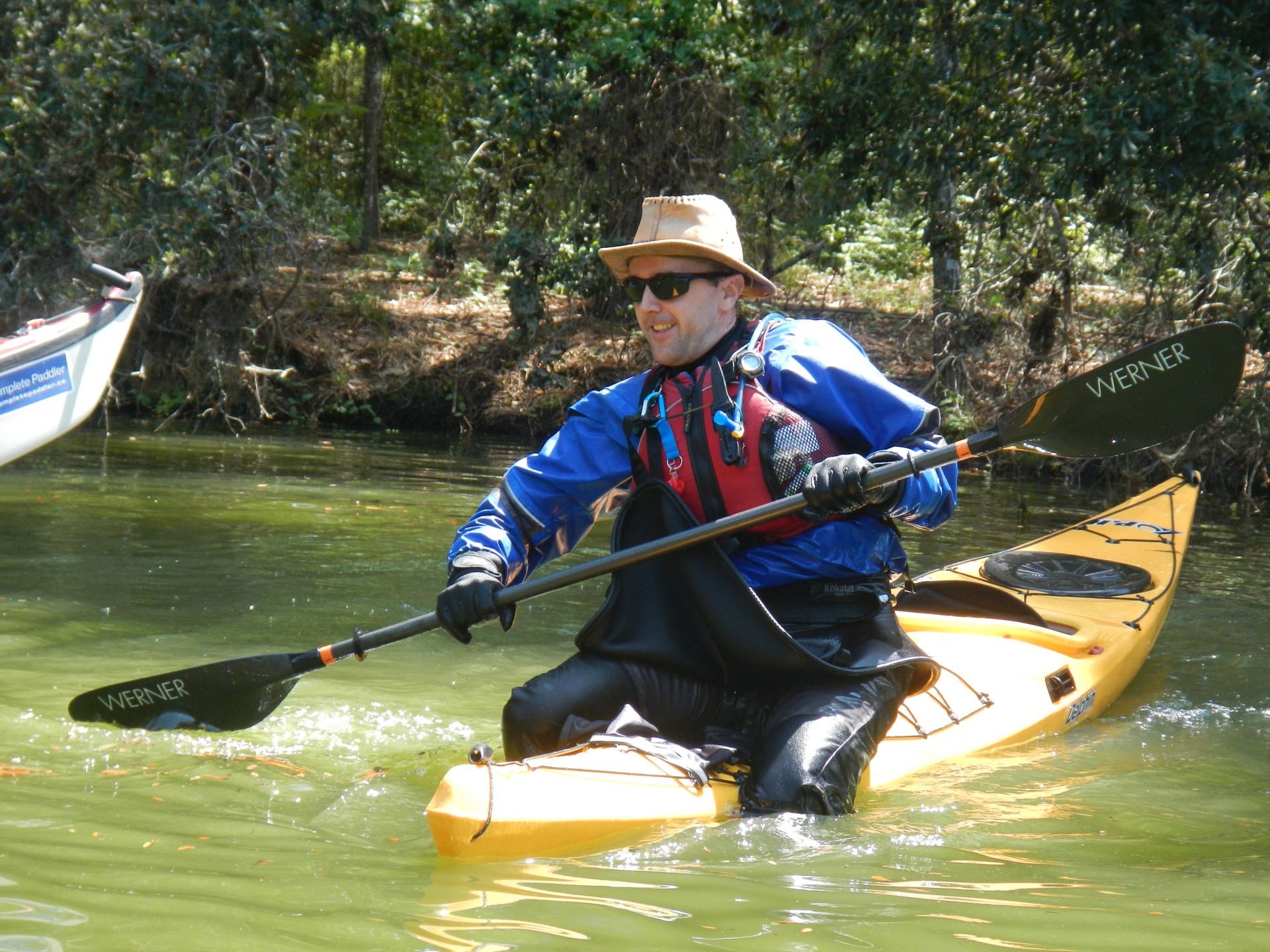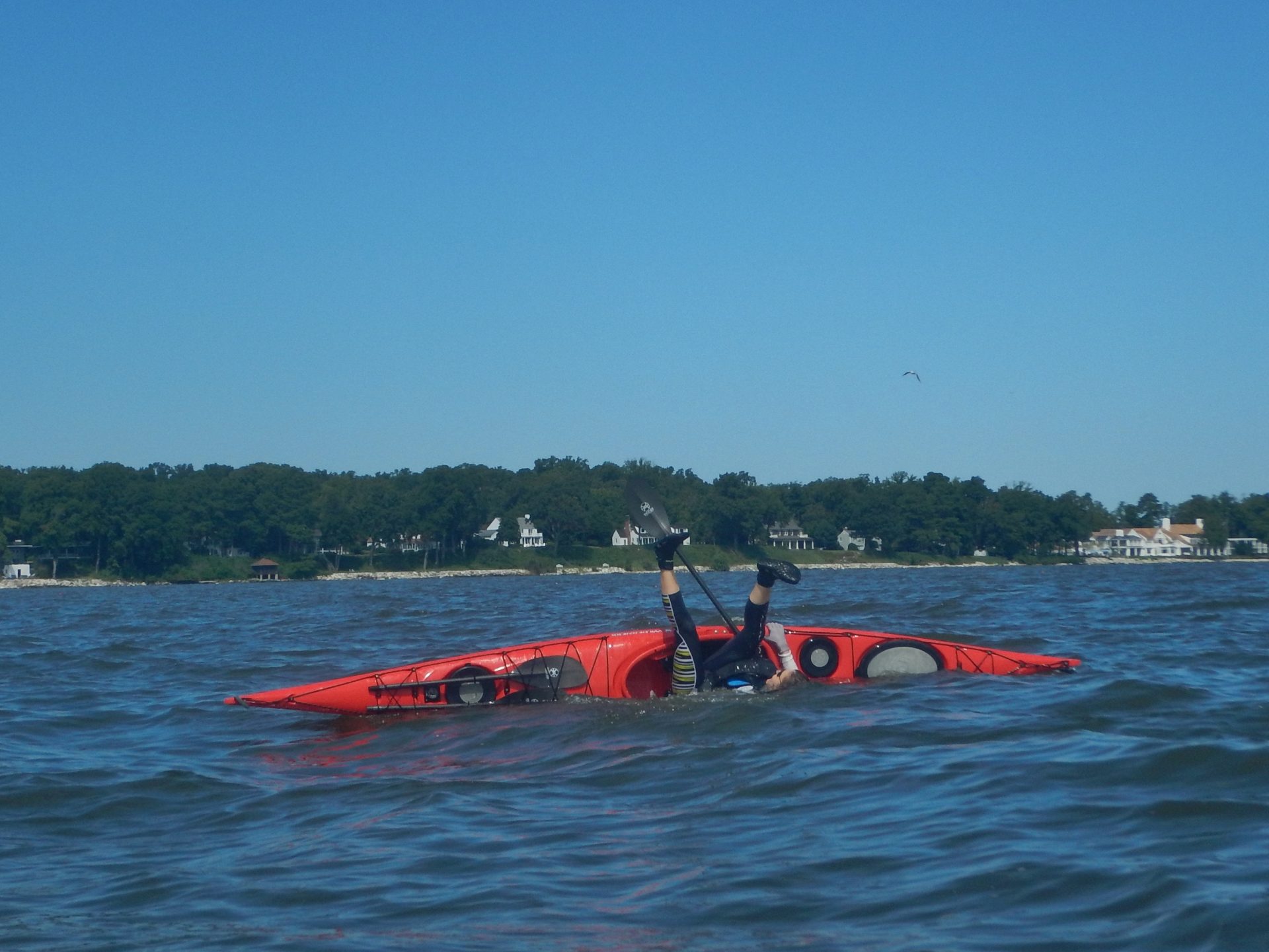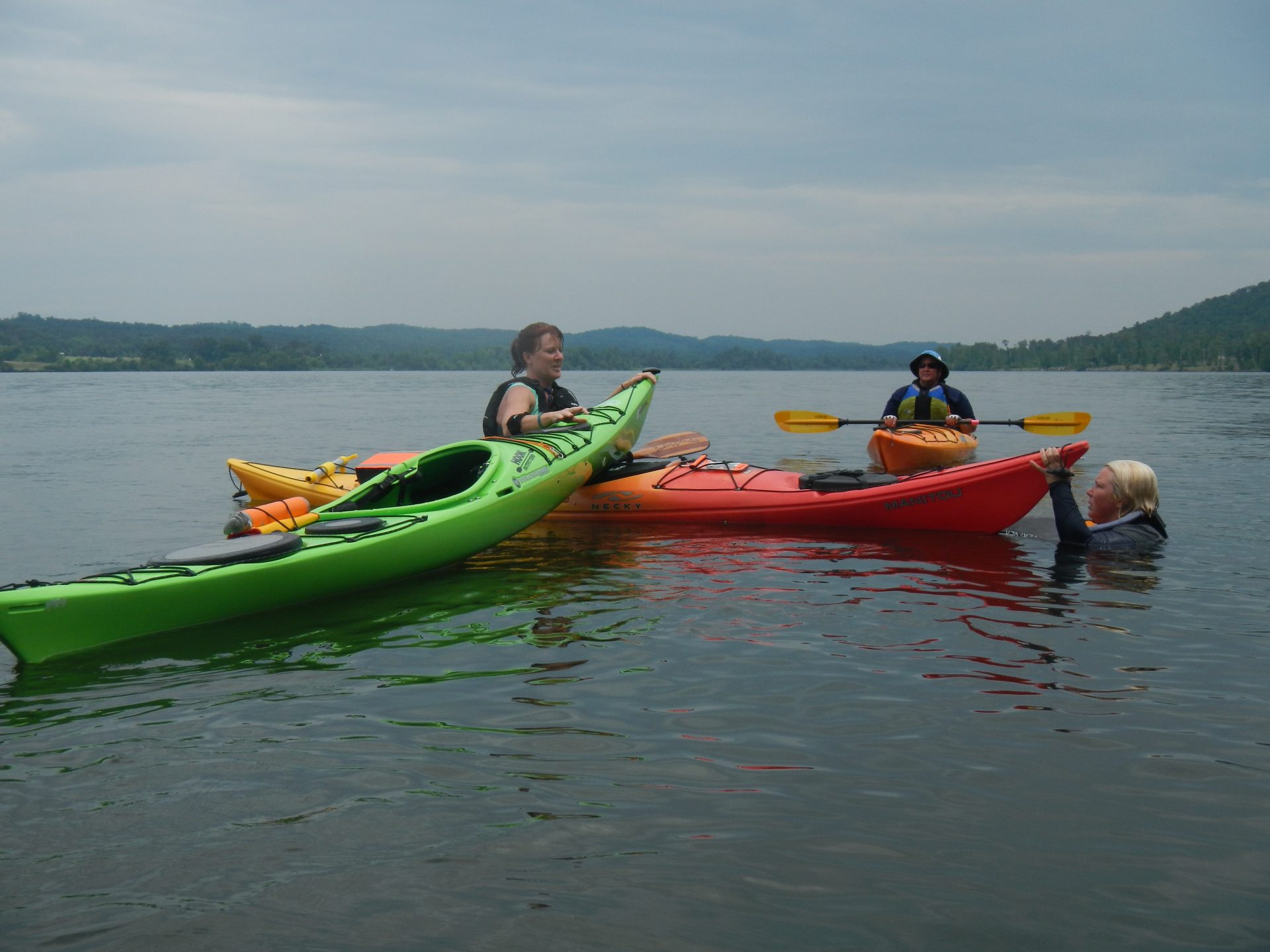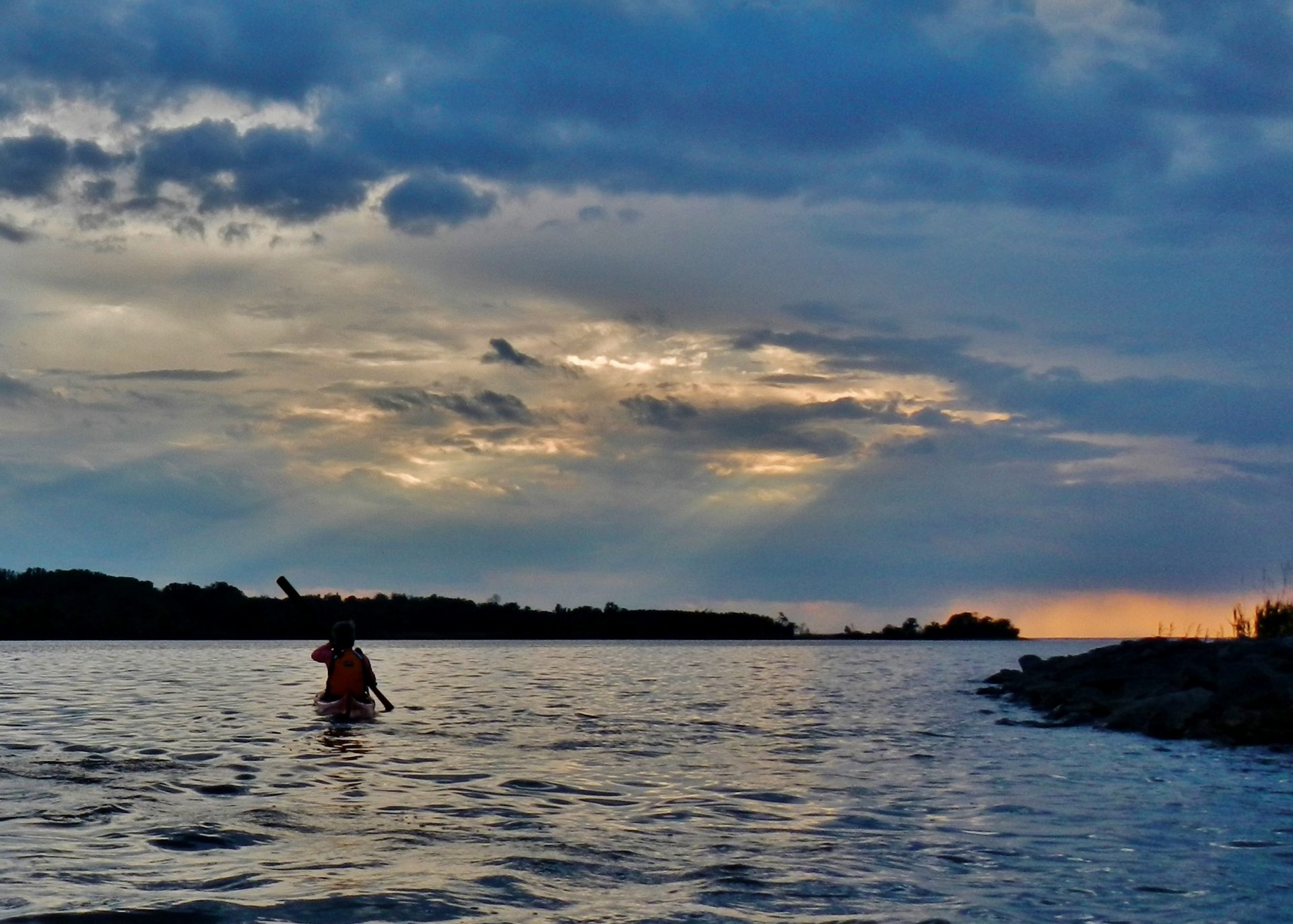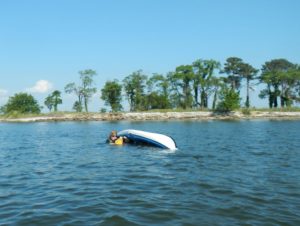 There has been a lot of debate regarding the use of the paddlefloat in self rescues. I continue to teach the paddlefloat reentry and consider it a valuable addition to my toolkit.
There has been a lot of debate regarding the use of the paddlefloat in self rescues. I continue to teach the paddlefloat reentry and consider it a valuable addition to my toolkit.
For beginners, learning a paddlefloat reentry is a valuable confidence builder. When I was a beginner, discovering that I could fall over, get out of the kayak, and climb back in was empowering. I was more willing to try things knowing that a capsize was no big deal. Of course to achieve that level of confidence it took several classes and practice sessions, some in rougher water. The argument that paddlefloat rescues don’t work in rough water isn’t valid; I don’t know of any self rescue that will work in rough water without practice, practice and more practice.
Many people, especially women do not have the strength, coordination, and balance to do a cowboy / cowgirl / scramble reentry. I agree that these can be faster and don’t require an additional piece of gear, they can be more tiring. And then you wind up in a boat that has a significant amount of water in the cockpit, and nothing to use for support. This is fine for more advanced paddlers who can paddle with their boats swamped, but may not be so good for less experienced kayakers. This weekend I was practicing paddlefloat reentry. Even with the time taken to inflate the float, it was a quick rescue with minimal expenditure of energy. I would rather take the time to set up the paddlefloat and succeed than try a cowboy scramble and fail several times. I have described one method for doing a paddlefloat reentry that works well for me here.
The paddlefloat can also be used with a reenter and roll. This is when you slide into your kayak while it is still upside down, then use the paddle and paddle float to brace up. It’s actually easier than it sounds. Even if you don’t have a roll, this is an effective way to get back into your boat.
One good thing about the paddle float rescue is that you have an outrigger to help stabilize you while you pump out the kayak and get your skirt on. This can even be left in place if you are not comfortable with your ability to remain upright. If things are really bad, you can leave the paddle float and call for assistance. The coast guard would rather perform a rescue than a recovery. Using all available resources first to get back in your boat, and then to stay in your boat and out of the water, puts you in a much better position to be rescued if necessary.





